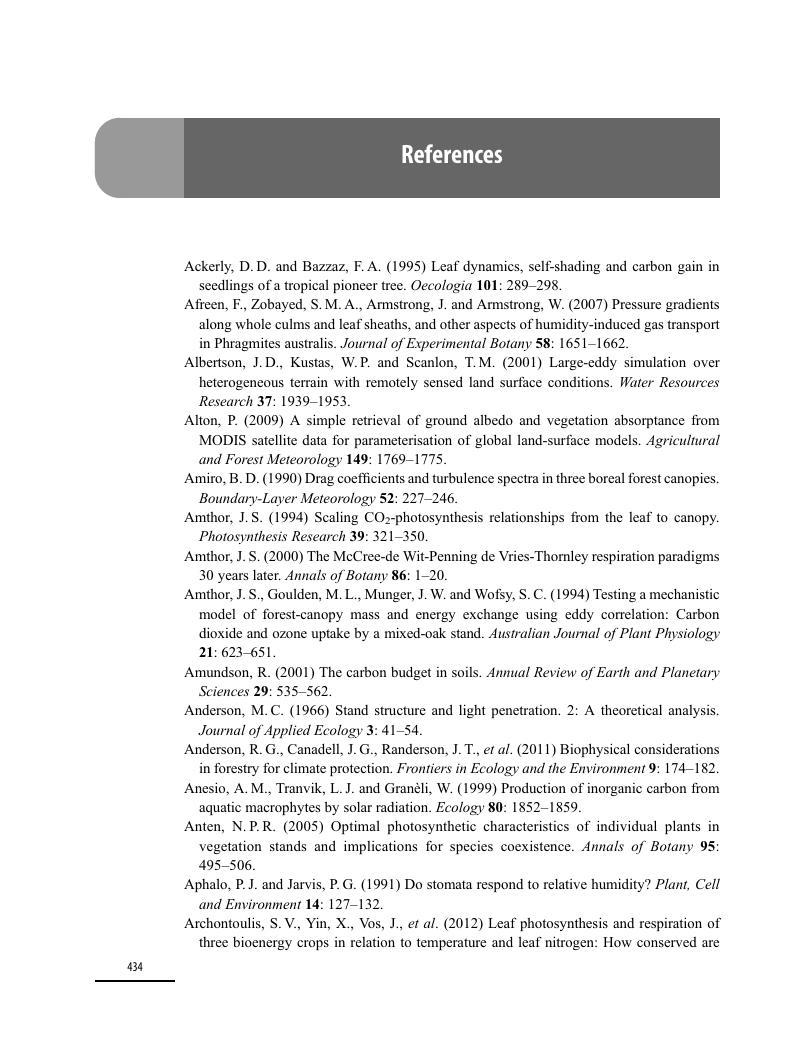Book contents
- Frontmatter
- Contents
- Preface
- List of symbols
- 1 The general nature of biosphere-atmosphere fluxes
- 2 Thermodynamics, work, and energy
- 3 Chemical reactions, enzyme catalysts, and stable isotopes
- 4 Control over metabolic fluxes
- 5 Modeling the metabolic CO2 flux
- 6 Diffusion and continuity
- 7 Boundary layer and stomatal control over leaf fluxes
- 8 Leaf structure and function
- 9 Water transport within the soil-plant-atmosphere continuum
- 10 Leaf and canopy energy budgets
- 11 Canopy structure and radiative transfer
- 12 Vertical structure and mixing of the atmosphere
- 13 Wind and turbulence
- 14 Observations of turbulent fluxes
- 15 Modeling of fluxes at the canopy and landscape scales
- 16 Soil fluxes of CO2, CH4, and NOx
- 17 Fluxes of biogenic volatile compounds between plants and the atmosphere
- 18 Stable isotope variants as tracers for studying biosphere-atmosphere exchange
- References
- Index
- Plate Section
- References
References
Published online by Cambridge University Press: 05 June 2014
- Frontmatter
- Contents
- Preface
- List of symbols
- 1 The general nature of biosphere-atmosphere fluxes
- 2 Thermodynamics, work, and energy
- 3 Chemical reactions, enzyme catalysts, and stable isotopes
- 4 Control over metabolic fluxes
- 5 Modeling the metabolic CO2 flux
- 6 Diffusion and continuity
- 7 Boundary layer and stomatal control over leaf fluxes
- 8 Leaf structure and function
- 9 Water transport within the soil-plant-atmosphere continuum
- 10 Leaf and canopy energy budgets
- 11 Canopy structure and radiative transfer
- 12 Vertical structure and mixing of the atmosphere
- 13 Wind and turbulence
- 14 Observations of turbulent fluxes
- 15 Modeling of fluxes at the canopy and landscape scales
- 16 Soil fluxes of CO2, CH4, and NOx
- 17 Fluxes of biogenic volatile compounds between plants and the atmosphere
- 18 Stable isotope variants as tracers for studying biosphere-atmosphere exchange
- References
- Index
- Plate Section
- References
Summary

- Type
- Chapter
- Information
- Terrestrial Biosphere-Atmosphere Fluxes , pp. 434 - 472Publisher: Cambridge University PressPrint publication year: 2014



